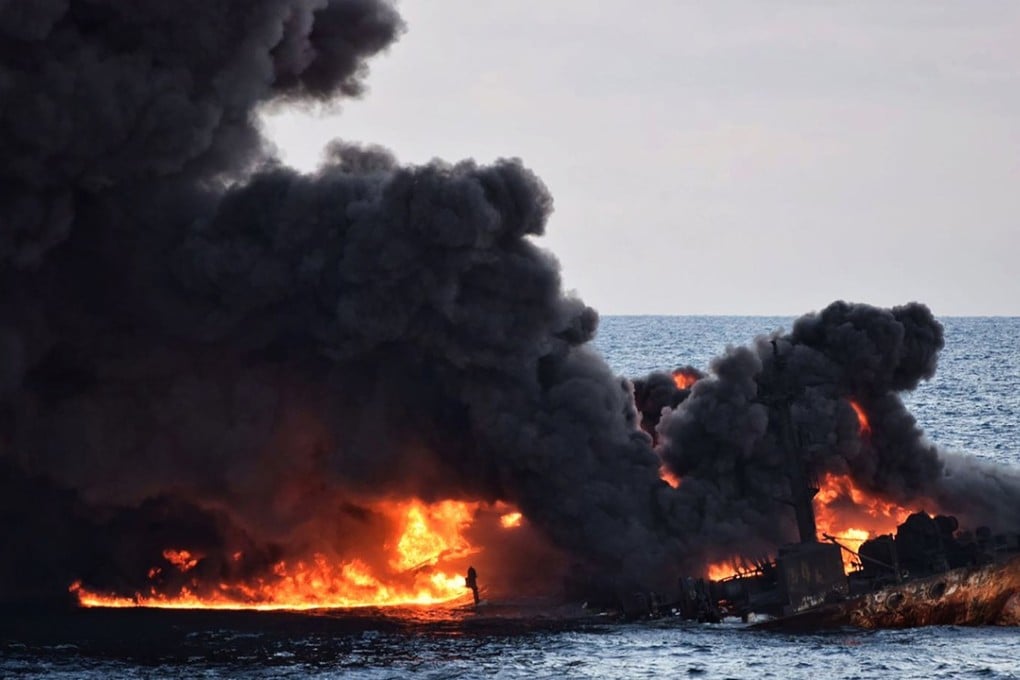China’s undersea robots find hole in leaking tanker but next move unclear
Undersea robots have found the hole ripped open in the Sanchi but what to do next remains unclear

Recovery teams continue to search for a way to stop an Iranian tanker from spewing oil off China’s east coast as the size of the slick continues to grow, a source in Shanghai’s port authority says.
The spill from the Sanchi has more than trebled in size, just over a week after the ship sank in a ball of flames and threatened to unleash an environmental catastrophe. Authorities have spotted three oil slicks with a total surface area of 332 sq km (128 square miles), compared to 101 sq km reported on Wednesday, according to the State Oceanic Administration.
Undersea robots sent to inspect the wreckage over the weekend have located the point of impact – a triangle-shaped hole stretching 35 metres, the Transport Ministry said.
But authorities remained uncertain over how best to tackle the source of the leak, the port authority source said.
Bad weather was expected to hamper the clean-up effort, with a cold front predicted to create waves up to 3.5 metres high.